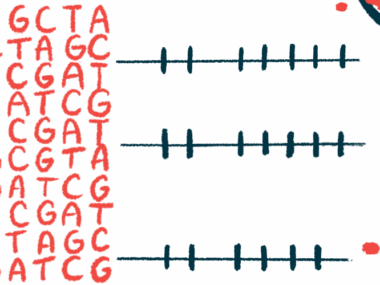Each month of age at onset lowers mortality risk in SMA: Study
Data provide 'critical insights' for genetic counseling, researchers say
Written by |

Survival outcomes in spinal muscular atrophy (SMA) are heavily influenced by age of onset, even among patients who are classified as having the same type of SMA, according to an analysis of more than three decades’ worth of data at a center in Thailand.
In fact, data suggest that every additional month at age of onset significantly decreases the risk of mortality in kids with SMA types 1 and 2.
“These insights are crucial for genetic counseling and prognostic discussions in clinical settings,” researchers wrote in the study, “Survival analysis and life expectancy of pediatric patients with spinal muscular atrophy in Thailand,” which was published in Heliyon.
SMA is divided into five types, numbered 0 through 4, depending on the time when symptoms first appeared. The most common forms of SMA are type 1, which is characterized by symptoms that appear from birth to 6 months, type 2, in which symptoms develop between 6 months and 18 months, and type 3, in which symptoms appear later in childhood.
Without treatment, survival outcomes are typically poorer in SMA type 1 than in type 2. In turn, survival outcomes for patients with type 2 are generally worse than for those with type 3, at least without treatment.
Reviewing survival data
For their study, the scientists reviewed survival outcomes from more than 100 children with SMA who were treated at the pediatric neuromuscular clinic of Siriraj Hospital in Bangkok, Thailand, between 1999 and 2021.
Since disease-modifying treatments for SMA didn’t become available until the late 2010s, most of the patients never received these treatments. Those who did had been treated for less than three months: Thirteen with Evrysdi and seven with Zolgensma.
Survival analyses involved 37 kids with SMA type 1, 53 with type 2, and 23 with type 3. As of the latest follow-up, 83.02% of those with type 2 were still alive, as were 91.3% of those with type 3, whereas only 21.62% of those with type 1 SMA were still alive.
The findings are broadly consistent with the idea that, without treatment, survival outcomes in SMA are dictated largely by age of onset. But the researchers got more granular, looking within types.
Statistical models showed that among children with SMA type 1, those who had symptoms before they were 2 months old tended to have worse survival outcomes than those with symptom onset between 2 and 6 months. Likewise, in SMA type 2, survival outcomes were worse among patients with symptom onset before age 1, compared with kids who didn’t develop symptoms until after their first birthday.
Further analyses indicated that the risk of death was statistically lower for each month older the child was when symptoms began, by 17% for type 1 patients and by 20% for those with type 2.
“Each additional month of age at onset significantly impacts survival,” the researchers concluded, adding that these findings “offer critical insights for genetic and prognostic counseling across SMA types.”






